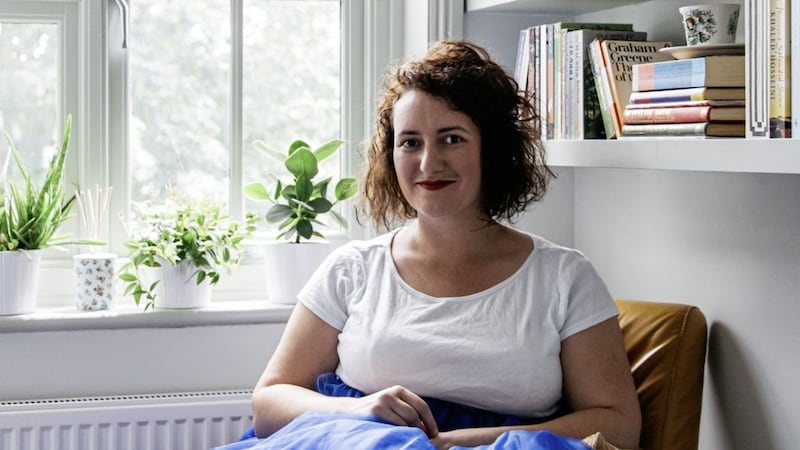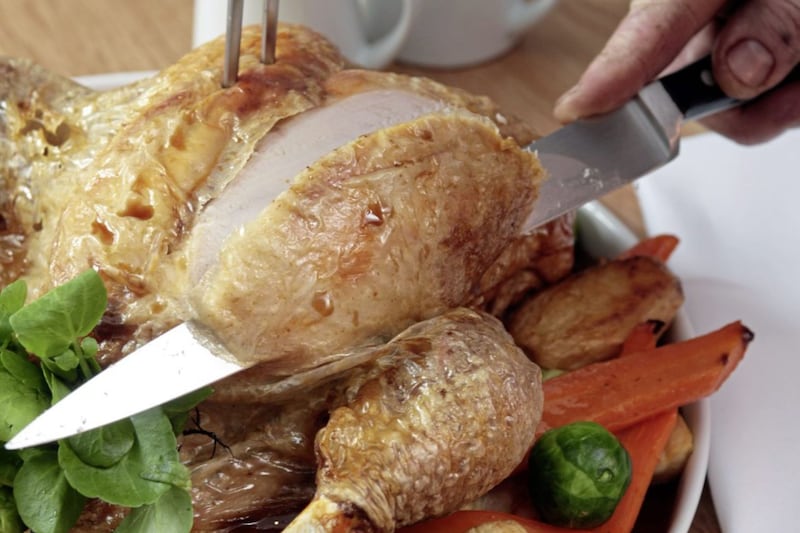KATE Young undoubtedly loves Christmas. Loves, loves, loves it. So much so that the Australian-born food writer has put together a collection of Yuletide recipes – 30 new, 20 swiped from her previous Little Library cookbooks – all cloth-bound in festive red, like a Dickensian classic, and interwoven with Christmas-themed essays.
Drawing on food from fiction – like the Turkish delight Edmund gorges on in The Lion, The Witch And The Wardrobe; roasted nuts inspired by The Mill On The Floss, and Moomin-style eggnog – as well as her own Christmases, including many a Swedish Christmas Eve feast, The Little Library Christmas is full of festive cheer. It’s also very sensitive to the fact not all Christmases are equal, let alone easy.
“I really love Christmas, but I totally appreciate that for a lot of people, it’s incredibly stressful,” says Young, noting the annual flux in complicated family dynamics and at the other extreme, loneliness during a season where togetherness is seemingly mandatory. “It’s never as simple as ‘Christmas is always great’.”
And whether it’s great or not, it’s certainly going to be different this year. “I’m trying not to assume what Christmas Day is going to look like,” says Young on the pandemic. “I think it’s going to be a weird one. I’ve talked to friends who are making a decision like, ‘We’re just gonna pretend it’s not happening’. But I love it, and I can’t pretend it’s not happening. So I’m going to find ways to make it good.”
Food is one such way – an excellent one at that.
Young has split the recipes in her book into five sections, covering food as gifts; festive party fare; Christmas Eve goodness; all the December 25 trimmings; and edible ways to see in the new year.
“I wanted to write a book that gives you ideas for that day but also covers all the time around it,” she explains, noting that yes, you may want to roast a whole goose, eschew turkey for chicken this year (“Cook a chicken, chickens are great!”), or go Swedish and make Jansson’s temptation (a potato and sprat bake). But it is also “completely fine, as we did a couple of years ago, to get a bunch of last-minute canapes for the freezer and just put them in the oven at various points throughout the day and eat that”, she says.
“There is joy to be had in making an incredible Christmas dinner, but if that is not something you’re going to find joyful, it does feel quite intense to have that pushed upon you. There’s always a chance to do it another way; there’s no right way for Christmas to look.”
Same goes for New Year’s Eve. It’s easy to feel pressurised into thinking you have to drink all the champagne and dance until your tights wear through, but Young says there’s magic in a low-key New Year. Especially when it involves making her cheesy orzo using the nubbly odds and ends of your Christmas cheeseboard.
Now based in the UK, Young is rather used to Christmas shifting shape and form. Growing up in the 90s in Australia, Christmas Day was “monstrously hot” and sunny, and spent largely in the pool.
“Generally, we ate cold meat and potato salads, so we’d have a ham, but we’d have it cold,” Young recalls. “December is a beautiful time of year for food in Australia – all the tropical fruit is out, so you’d have mangoes; it would be extraordinary. But we would still have plum pudding because my great-grandma made Christmas puddings every year. I still use her recipe, which is in the book, and we would still have that to finish, but not until the sun had set and it was slightly cooler.”
Sprouts were not really on the menu… “I didn’t eat them a lot until I came [to the UK] and by then I was in my 20s,” says Young. “I loved them instantly because they are slightly bitter and savoury and good, and if you know how to cook them, they’re delicious. I didn’t have any of that school dinners association, where they’ve been boiled to oblivion.”
She even pickles them. “They’ve become a thing that’s cool again,” she says. “At Christmas, they sometimes receive a worse rap than they should.”
Christmas may be wrought (and sometimes fraught) with tradition, ritual and routine, but Young hopes The Little Library Christmas offers space and ideas, not festive mandates. “I don’t want it to feel like I’m presenting a utopian version of Christmas,” she says. “I want the book to very much feel like a usable practical friend in the kitchen, but also a memory of the really good parts of Christmas, and an acknowledgement of the parts where it’s tricky as well.
“I want it to be a Christmas book for people who don’t necessarily have to have completely uncomplicated feelings about Christmas,” she adds. And in a complicated year, there’s comfort to be found in that.
The Little Library Christmas by Kate Young is published by Head of Zeus, priced £15. Photography by Lean Timms. Below are two recipes from the book for you to try.
BUCKWHEAT BLINIS FOR BREAKFAST
(Enough for 8)
60g buckwheat flour
60g strong white bread flour
A pinch of salt
A pinch of sugar
100ml cup milk
2tsp fresh yeast (or 1tsp fast-action yeast)
5tbsp sour cream
1 egg yolk
2 egg whites
30g/2tbsp butter
To serve:
Smoked salmon, or leftover gravadlax from yesterday
3½tbsp sour cream
Dill sprigs
Juice of 1 lemon
Method:
Whisk together the flours, salt and sugar in a mixing bowl. Warm the milk to body temperature in a saucepan, then stir in the yeast until it dissolves. Whisk in the sour cream, and the egg yolk.
Pour the liquid ingredients into the flour and whisk thoroughly. Cover the bowl with a tea towel and put it in a draught-free place to rise for an hour (it might take a little longer than this on Christmas morning, so feel free to get your bird prepped, or stuffing made). The batter should almost double in size.
After an hour, beat the egg whites to stiff peaks, and then fold them into the frothy mixture. Cover with the tea towel again and leave for another hour. The mixture should be very light and full of bubbles –almost like a foam.
Once the batter has risen, warm half a tablespoon of the butter in a frying pan. Without stirring the mixture (you want to retain the lightness), drop teaspoons of the batter into the pan. When the top of a blini is covered with bubbles, flip it over. Cook the blinis in batches until all the batter is used up, adding more butter when needed.
Serve each blini warm, with a twist of salmon, a dollop of sour cream, a sprig of dill, and a squeeze of lemon. They can be warmed through in the oven, but are best fresh, if you can serve them straight away.
CRISP BRUSSELS SPROUTS
(Serves 8)
800g Brussels sprouts
2tbsp sesame oil
2tbsp soy sauce
1tbsp fish sauce
1tbsp rice vinegar
1tbsp sesame seeds
Handful of parsley leaves
1 red chilli, deseeded and finely sliced
Method:
Clean the Brussels sprouts, pull off any grim outer leaves, and trim the stem. Slice in half through the base. Warm a large frying pan over a moderate heat. Pour in the sesame oil and, once hot, add the sprouts. Cook for six to eight minutes (depending on their size) until the sprouts are tender on the inside, and crisp and charred in places on the outside.
Meanwhile, mix the soy sauce, fish sauce and vinegar together in a bowl. Take the sprouts off the heat, add the dressing and toss. Top with the sesame seeds, parsley and chilli and serve immediately








